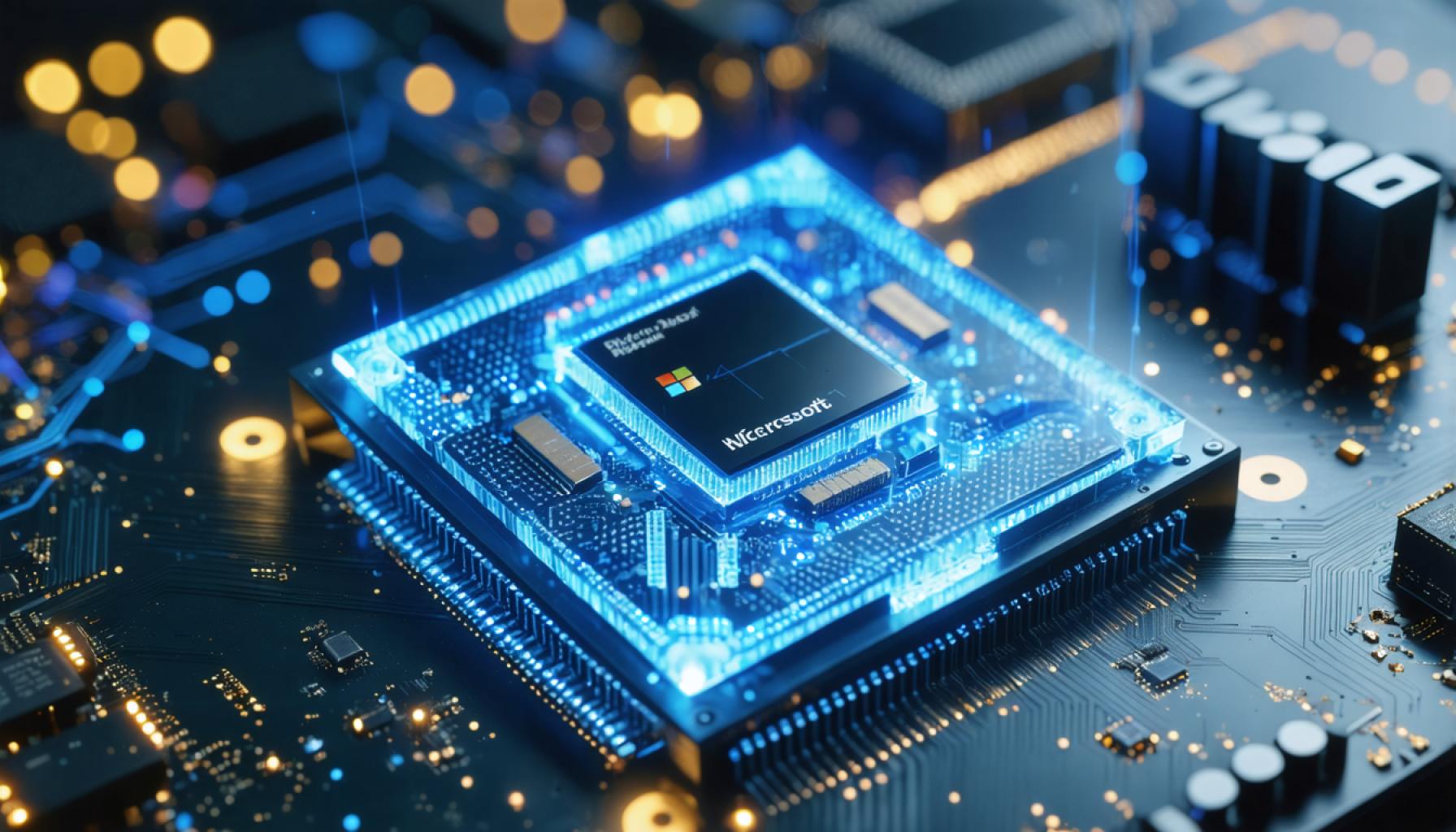- The Majorana 1 chip, unveiled by Microsoft, represents a significant advancement in the quantum computing landscape.
- With a topological core, the Majorana 1 manipulates Majorana particles to create highly reliable qubits, essential for practical quantum computing.
- This innovation is poised to transform technology as profoundly as semiconductors did for the digital revolution.
- Quantum computers, unlike traditional binary-based systems, use qubits that exist in multiple states, allowing for more complex computations.
- Majorana 1 aims to address error challenges in quantum computing, enabling robust and scalable systems with up to a million qubits.
- The potential applications range from microplastic breakdown to self-healing materials, turning theoretical possibilities into practical solutions.
Beneath the hum of ambition and innovation, Microsoft has unveiled the Majorana 1, a beacon in the quantum world poised to bridge the gap between concept and everyday practicality. This isn’t just another chip; it represents the dawn of a new technological era. Constructed with a groundbreaking topological core, the Majorana 1 isn’t content with following the rules—it plans to rewrite them.
Picture a material that can manipulate Majorana particles to create qubits, the lifeblood of quantum computing, with unparalleled reliability. Imagine this, not decades from now, but only years away. Microsoft is betting on this foundational shift, likening it to the invention of semiconductors which sparked the digital revolution, giving birth to smartphones and modern computers. The parallel drawn is fitting; the Majorana 1 is no less transformative.
Traditional computers resemble rigid, binary worlds where data sits simply in zeroes and ones. Contrast this with quantum machines, where qubits dance in a dance of duality, existing in many states at once, yet often faltering under the pressure of errors. Majorana 1 steps onto this stage with a promise to refine this delicate ballet into something robust and scalable—imagine a quantum system humming with a million qubits.
The allure of achieving what the combined might of all existing computers cannot—like microplastic breakdown or self-healing materials—ignites the imagination. Here lies the key idea: Majorana 1 isn’t just a chip. It’s a glimpse into a future where the quantum leap is not just theoretical, but tangible, fitting snugly in the palm of your hand. As technology races forward, this chip is set to turn today’s dreams into tomorrow’s reality.
The Chip that Could Change Everything: Unveiling Microsoft’s Quantum Leap with Majorana 1
How-To Steps & Life Hacks
How to Stay Updated on Quantum Computing Advances:
1. Subscribe to Tech Newsletters: Join newsletters from Microsoft, IBM, and Google to receive updates on quantum computing breakthroughs.
2. Online Courses: Platforms like Coursera and edX offer courses on quantum mechanics and computing to familiarize yourself with basic and advanced concepts.
3. Join Tech Forums: Participate in forums like Reddit’s r/QuantumComputing for community insights and discussions.
Real-World Use Cases
The Majorana 1 chip isn’t just theoretical; it has direct applications:
– Cryptography: Secure communications through quantum key distribution.
– Optimization Problems: Enhance logistics and supply chain management.
– Drug Discovery: Simulate complex molecular structures to speed up the discovery process.
Market Forecasts & Industry Trends
The quantum computing market is projected to grow rapidly over the next decade:
– Growth Rate: Expected to reach $64.98 billion by 2030 with a CAGR of 56%.
– Investments: Increase in R&D investments, particularly from countries like the USA and China.
Reviews & Comparisons
Comparing Quantum Chips:
– Microsoft Majorana 1 vs. IBM’s Quantum Processors:
– Stability: Majorana 1 promises higher qubit stability.
– Compatibility: IBM’s processors currently support more quantum development tools.
Controversies & Limitations
– Technological Hurdles: Overcoming decoherence and error rates remains a challenge.
– Ethical Concerns: Quantum computing’s potential to break encryption poses cybersecurity threats.
Features, Specs & Pricing
– Majorana 1 Features: Topological core, enhanced qubit reliability.
– Pricing: Not commercially available yet; primarily for research collaborations.
Security & Sustainability
Security:
– Majorana particles contribute to inherently secure quantum communication channels.
Sustainability:
– Potential for reducing energy requirements in data processing compared to classical computers.
Insights & Predictions
– Future Impact: Majorana 1 could enable new technological advances in AI, climate modeling, and more.
– Industry Shift: Traditional tech giants will need to adapt to the quantum revolution or risk obsolescence.
Tutorials & Compatibility
Getting Started with Quantum Computing:
– Software Tools: Microsoft’s Q# and Azure Quantum provide environments for development.
– Hardware Access: Organizations and universities may gain early access to Majorana 1 for research purposes.
Pros & Cons Overview
Pros:
– Enhanced qubit stability.
– Potential to solve complex problems faster than classical computers.
Cons:
– Still in early development.
– High cost of research and development.
Recommendations and Quick Tips
1. Engage in Learning Courses: Understand quantum principles through online resources.
2. Watch Industry Trends: Keep an eye on major tech conferences for announcements.
3. Network with Professionals: Join quantum computing networks to stay informed.
This blend of information is essential for enthusiasts and professionals alike, as they navigate the evolving landscape of quantum technology. Stay informed, keep learning, and prepare for the coming quantum age.
